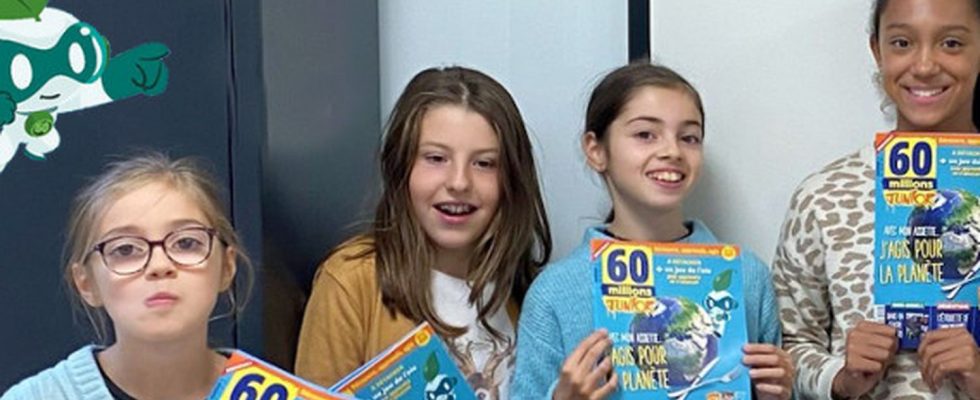The first issue of “60 Millions Junior”, aimed at 8-12 year olds, released on newsstands on December 7, will allow this age group to discover the origin of the food they consume and the products they use. , and also to act at their level.
Published
Reading time: 4 min

This new quarterly for 8-12 year olds, 60 Million Junior, intends, like his elder, to inform younger people about labels, laws, advertisements, or the manufacturing of consumer products. “Discover, learn, act”, this is the leitmotif of this new magazine. Details from Sylvie Metzelard, editor-in-chief of the magazine 60 Million consumers.
franceinfo: 60 Million Junior has the same DNA, the same objectives as those we have known for over 50 years in your monthly?
Sylvie Metzelard: Yes, in the sense that exactly like in the adult paper magazine, which is 53 years old today, we offer tests, decryptions, behind the scenes of product manufacturing. We explain what our rights are, we alert, we warn against abuses.
What inspired you to launch this new magazine? Are young people interested in consumption?
We said to ourselves that there is no age to learn and, above all, the earlier we learn good reflexes, the sooner we will be a consumer, an informed citizen. Young people are interested in many things, starting with the future of the planet, and that’s a good thing, us too!
60 Million Junior is a magazine very focused on protecting the planet: is paying attention to what you eat to better protect the environment, is that a major concern among young people?
Their concern – we saw it during the tests we carried out on a number 0 – is how we go about not polluting or polluting less, how we go about preserving animal species, what it is possible to achieve for the climate. Climate change particularly worries them.
Moreover, there are plenty of very concrete examples in this first issue, and each time, you target the products that young people prefer…
Yes, for example, our main folder is called “With my plate, I act for the planet”. OWe started with a simple starter-main course-dessert menu, the opportunity, for example, to talk about the avocado and its water consumption, not to mention the transport to bring it to France; beef in a hamburger helps explain methane, a greenhouse gas that contributes to global warming; or when you cook a chocolate banana tart, you might wonder about using a spread containing palm oil. An opportunity to talk about deforestation.
And then there is reporting, reporting in which you want to involve young people. Was this the case for the article concerning the Agen packaging sorting center?
Yes, we followed with children what happens to an empty plastic bottle, from the moment we put it in the yellow bin until it is transformed into a sorting center. This helps explain the process but also what becomes of the recycled waste.
You also want to help them understand the behind the scenes of consumption, advertising, marketing, ensure that they are vigilant…
Yes, the idea is to help them clearly differentiate between what is information and what is advertising. We decipher the advertising messages for them, in order to explain how we are encouraged to buy by all means. It is dIt’s all the more important to avoid the traps of ads and influencers, as young people are the primary users of social networks. Moreover, theChildren have absolutely no idea that the posts of the influencers they follow in large numbers, and from a very young age, without their parents knowing, are never “free”.
Is developing critical thinking something that can be learned?
Yes, we ask teachers in particular to sharpen this critical sense of students. Indeed, I think that this is learned by encouraging reflection.
Well, it’s complicated to design a magazine for young people, how can it be informative without being boring?
By being as fun as possible! Little games accompany each subject, we have also slipped recipes into the file With my plate, I act for the planet. We also offer a game of goose around the environment, and we end the issue with a giant quiz to check if the concepts have been well understood. We also have a little mascot called Konso to accompany reading. Half robot, half superhero, we recognize her by her little green leaf on her head.
